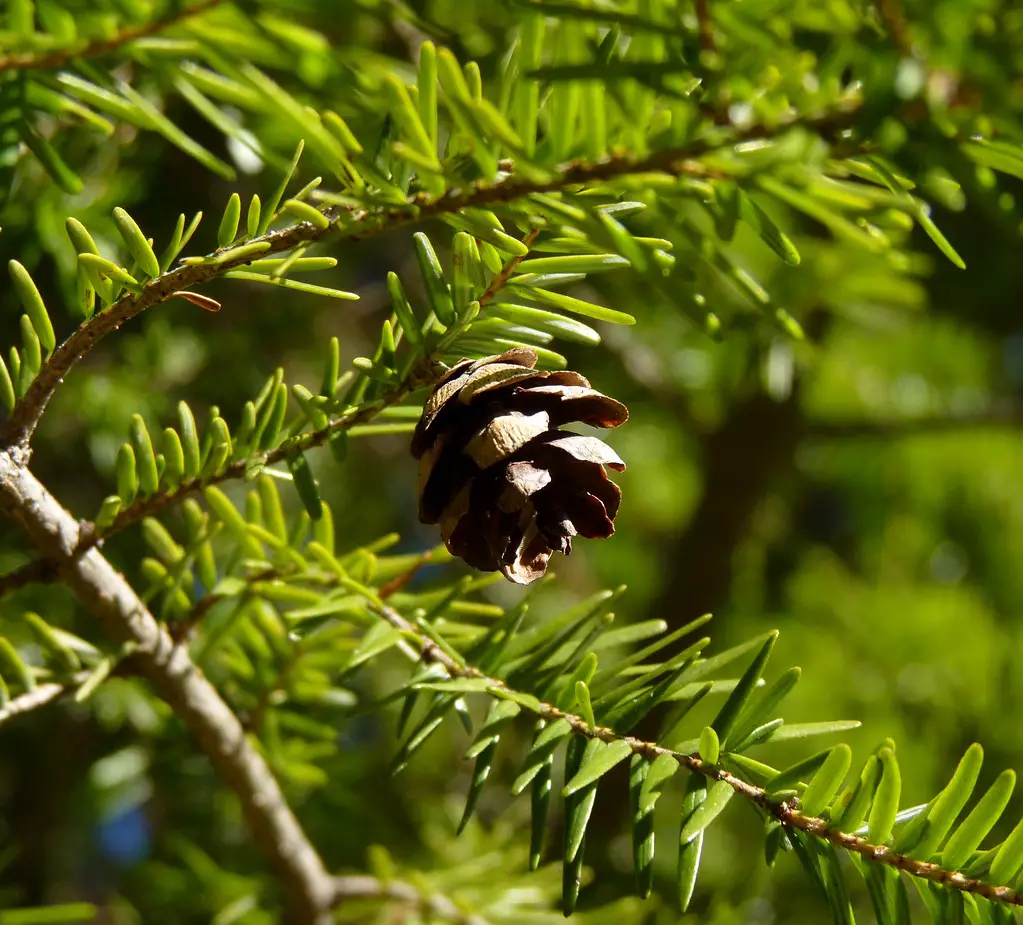The Eastern Hemlock, known scientifically as Tsuga canadensis, is a graceful and majestic conifer native to the eastern United States and Canada. This evergreen tree is often recognized by its feathery, finely-textured needles and elegantly drooping branches. It plays a vital role in the ecosystem, providing shelter and food for various wildlife, including birds and mammals.
Belonging to the Pine family, Eastern Hemlock can live for hundreds of years, growing to impressive heights. Its distinctive appearance, with horizontally spread branches and a conical shape, makes it an attractive addition to landscapes. However, the Eastern Hemlock is also known for being under threat from pests, such as the Hemlock Woolly Adelgid, that have contributed to significant declines in some areas.
The cultural and historical significance of Eastern Hemlock is not to be underestimated either. Indigenous peoples have utilized various parts of the tree for medicinal purposes, and it has been a valuable resource in traditional industry. Today, it continues to be admired for its beauty and resilience, though it requires careful attention and proper care to thrive in a cultivated setting.
| Common Names | Eastern Hemlock, Canadian Hemlock |
|---|---|
| Botanical Name | Tsuga canadensis |
| Family | Pinaceae |
| Plant Type | Evergreen Tree |
| Mature Size | 40 to 70 feet tall, 25 to 35 feet wide |
| Sun Exposure | Full sun to part shade |
| Soil Type | Acidic, well-drained, moist soil |
| Hardiness Zones | 3 to 7 |
| Native Area | Eastern United States, Southeastern Canada |
Eastern Hemlock Care
Eastern Hemlock is relatively easy to care for once established, but it needs a favorable environment that mimics its natural habitat. This means providing acidic, moist, well-drained soil, and protecting it from harsh winds.
Proper monitoring for pests, particularly the Hemlock Woolly Adelgid, is essential as this pest has devastated populations in many areas. Timely treatment can prevent infestations and promote the overall health and longevity of the tree.
Light Requirement for Eastern Hemlock
Eastern Hemlock thrives in full sun to part shade. Though it can tolerate a variety of lighting conditions, providing a balance of sun and shade will encourage healthy growth and development.
Soil Requirements for Eastern Hemlock
Preferring acidic, moist, and well-drained soil, Eastern Hemlock does not tolerate alkaline or overly dry conditions. Amending soil with organic matter can enhance its structure and fertility.
Water Requirements for Eastern Hemlock
Regular watering is necessary, especially in the early years. Mature trees are somewhat drought-tolerant but perform best with consistent moisture, particularly in dry or hot regions.
Temperature and Humidity
Eastern Hemlock is adaptable to various temperature ranges typical of its native zones. It appreciates humidity but requires good airflow to prevent fungal diseases.
Fertilizer
Fertilizing is generally not required if the tree is planted in fertile soil. If needed, a balanced slow-release fertilizer can be applied in early spring.
Pruning Eastern Hemlock
Pruning is usually minimal and performed to shape the tree or remove dead and diseased branches. Avoid heavy pruning as it can lead to sparse growth.
Propagating Eastern Hemlock
Propagation is commonly done through cuttings or seeds. Cuttings can be taken in early summer, while seeds require a stratification process before planting.
How To Grow Eastern Hemlock From Seed
Growing Eastern Hemlock from seed is a challenging process. After stratification, seeds can be sown in containers with well-drained soil. Patience is needed, as germination can be slow.
Common Pests & Plant Diseases
Hemlock Woolly Adelgid
This tiny insect can be lethal to Eastern Hemlock, requiring immediate treatment.
Fungal Diseases
Proper airflow and moisture control can prevent most fungal issues.
Common Problems With Eastern Hemlock
Needle Drop
Caused by various factors like pests or diseases, and requires proper diagnosis.
Shallow Root System
This can lead to instability in windy conditions. Planting in a protected area helps.
Pro Tips
- Plant Eastern Hemlock in a wind-protected location.
- Monitor regularly for Hemlock Woolly Adelgid and treat promptly if detected.
- Consider interplanting with other native species to create a natural, forest-like setting.



